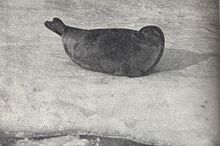Saimaa Lake
The name Saimaa likely comes from a non-Uralic, non-Indo European substrate language. Alternatively, it has been proposed that the name may be connected to the Sami word sápmi.
History

The lake was formed by glacial melting at the end of the Ice Age. Major towns on the lakeshore include Lappeenranta, Imatra, Savonlinna, Mikkeli, Varkaus, and Joensuu. About 6,000 years ago, ancient Lake Saimaa, estimated to cover nearly 9,000 km (3,500 sq mi) at the time, was abruptly discharged through a new outlet. The event created thousands of square kilometres of new residual wetlands. Following this event, the region saw a population maximum in the decades following only to later return to an ecological development towards old boreal conifer forests which saw a decline in population.
Topography
The Vuoksi River flows from Saimaa to Lake Ladoga. Most of the lake is dotted with islands, and narrow canals divide the lake in many parts, each having its own name (major basins include Orivesi, Puruvesi, Haukivesi, Yövesi, Pihlajavesi, and Pyhäselkä, among others). The southernmost major basin is sometimes called "Suur-Saimaa", or "Greater Saimaa", but this is not an official name.
Saimaa exhibits all major types of lake in Finland at different levels of eutrophication.
Finland's Ministry for Foreign Affairs describes the Saimaa basin (an area larger than the lake) as a "maze of detail": according to an English-language statement, the area includes 14,000 islands and "more shoreline here per unit of area than anywhere else in the world, the total length being nearly 15,000 kilometres (9,300 mi)."
-
Hietasaari island on Lake Saimaa
-
Olavinlinna fortress on Lake Saimaa
-
Lake Saimaa shoreline
Natural resources
This section needs additional citations for verification. (June 2023) |

An endangered freshwater seal, the Saimaa ringed seal, lives only at Saimaa. Another of the lake's endangered species is the Saimaa salmon.
Due to its rich, easily accessible asbestos deposits, the shores of the lake are the most probable origin of asbestos-ceramic, a type of pottery made between c. 1900 BC – 200 AD.
The areas around Saimaa lake are a very popular location for summer cabins as well as lake cruises.
Saimaa canal
The Saimaa Canal from Lauritsala (Lappeenranta) to Vyborg connects Saimaa to the Gulf of Finland. Other canals connect Saimaa to smaller lakes in Eastern Finland and form a network of waterways. These waterways are mainly used to transport wood, minerals, metals, pulp and other cargo, though tourists also use the waterways.
Notable people
- The Russian writer Maxim Gorky went into exile near the shores of Lake Saimaa for a period of time after his apartment was raided by the Black Hundreds in the aftermath of the Moscow Uprising of 1905. He wrote to his divorced wife Ekaterina, writing "it's beautiful here, like a fairy tale".
See also
References
- ^ "Suur-Saimaa". Järvi-meriwiki (in Finnish). Finnish Environment Institute. 9 March 2021. Retrieved 22 February 2023.
[Suur-Saimaan] yhteenlaskettu pinta-ala on 427 946,4 ha ja suurin syvyys 85,81 m.
[The total surface area [of Suur-Saimaa] is 427,946.4 hectares and its greatest depth is 85.81 meters.] - ^ "Saimaa". Kotimaisten kielten keskus.
- ^ Markku Oinonen et al. (2014) Event reconstruction through Bayesian chronology: Massive mid-Holocene lake-burst triggered large-scale ecological and cultural change; url=http://hol.sagepub.com/content/24/11/1419.abstract
- ^ Making of Järven tarina.
- ^ Hämäläinen, Arto (November 2001). "Saimaa – Finland's largest lake". Virtual Finland. Archived from the original on 14 February 2008.
- ^ McClane, A.J. (April 1973). "Fishing: The Missing Link". Field & Stream. LXXVII (12): 144. Retrieved 20 March 2013.
- ^ Figes, Orlando: A People's Tragedy: The Russian Revolution 1891–1924. The Bodley Head, London (2014). p. 202
External links
- www.ymparisto.fi – Saimaa, nimet ja rajaukset (in Finnish)
- Visit Saimaa official website, Mikkeli, Savonlinna and Varkaus regions
- Saimaa – the heart of Finnish lakeland, from thisisFinland website
- Awarded "EDEN – European Destinations of Excellence" non traditional tourist destination 2010


